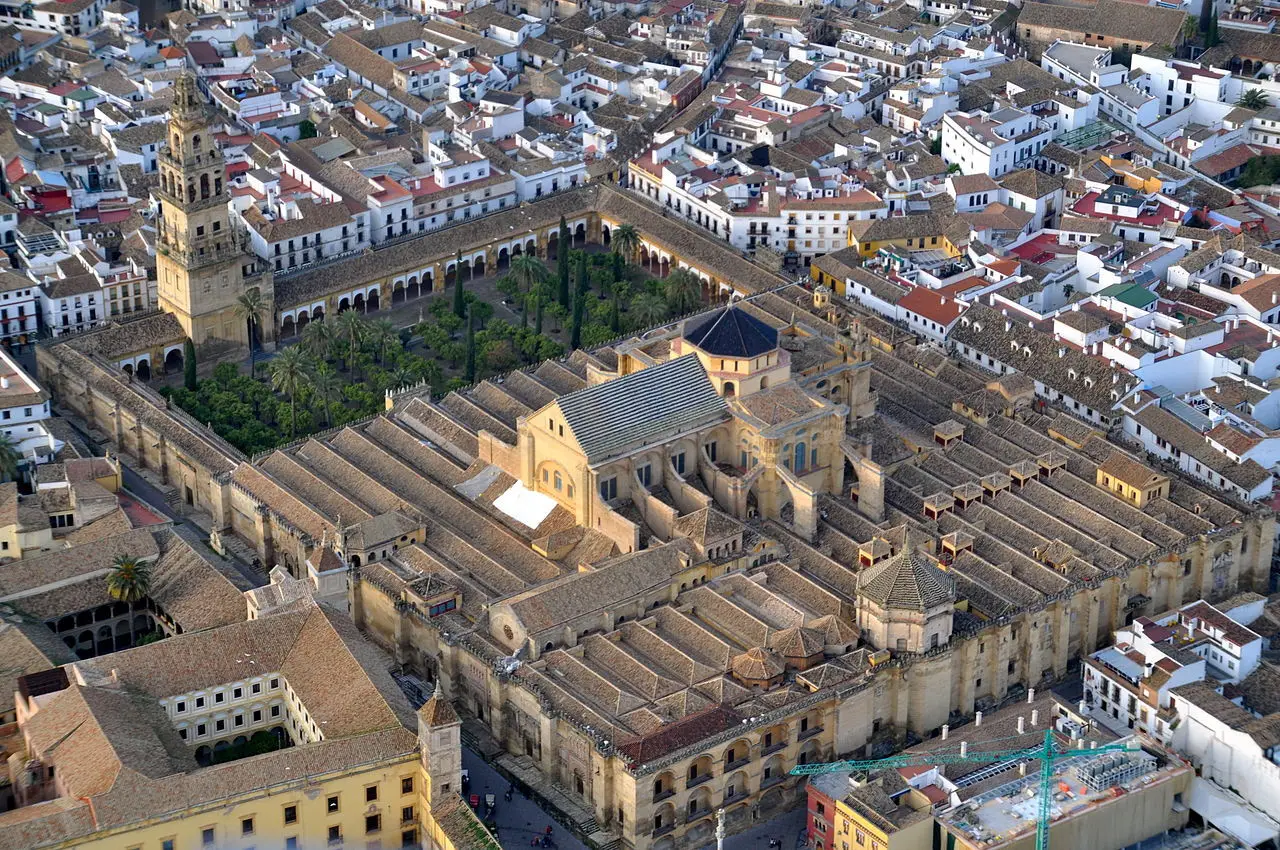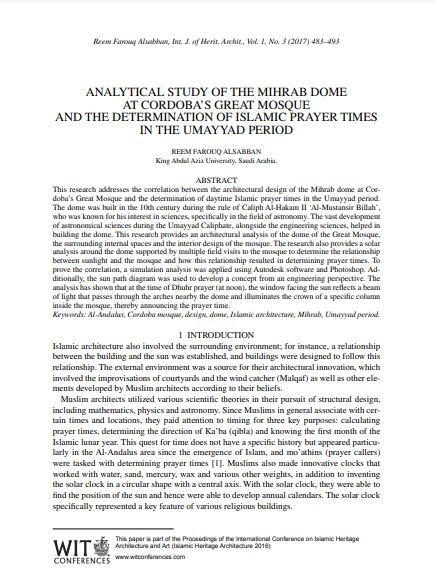

This research addresses the correlation between the architectural design of the Mihrab dome at Cordoba’s Great Mosque and the determination of daytime Islamic prayer times in the Umayyad period. The dome was built in the 10th century during the rule of Caliph Al-Hakam II ‘Al-Mustansir Billah’, who was known for his interest in sciences, specifically in the field of astronomy. The vast development of astronomical sciences during the Umayyad Caliphate, alongside the engineering sciences, helped in building the dome. This research provides an architectural analysis of the dome of the Great Mosque, the surrounding internal spaces and the interior design of the mosque. The research also provides a solar analysis around the dome supported by multiple field visits to the mosque to determine the relationship between sunlight and the mosque and how this relationship resulted in determining prayer times. To prove the correlation, a simulation analysis was applied using Autodesk software and Photoshop. Additionally, the sun path diagram was used to develop a concept from an engineering perspective. The analysis has shown that at the time of Dhuhr prayer (at noon), the window facing the sun reflects a beam of light that passes through the arches nearby the dome and illuminates the crown of a specific column inside the mosque, thereby announcing the prayer time.
I agree to the terms outlined below:
You agree to upload and assign Mosqpedia Database the rights to use the content worldwide and in perpetuity across all current and future media platforms. Mosqpedia Database may edit, copy, adapt and translate your contribution.
The content will be distributed under the Creative Commons Attribution-Deed – Attribution-NonCommercial-NoDerivatives 4.0 International – Creative Commons
All data will be stored in line with data protection regulations.